April 30, 2025
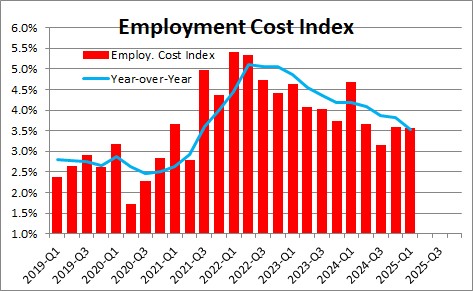
The employment cost index for civilian workers climbed at a 3.6% annual rate in the first quarter after climbing at a 3.6% annual rate in the fourth quarter. Over the course of the past year it has risen 3.5%.
The employment cost index peaked at 5.1% in the second half of 2022 and has been gradually slowing since. For what it is worth, the ECI grew 2.7% in the year just prior to the recession. Thus, it continues to slow but has not yet fallen to its pre-recession pace of 2.7%.
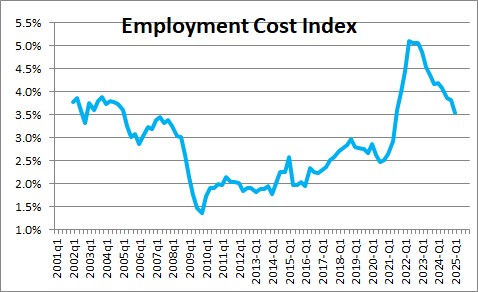
Wages climbed at a 3.1% rate in the first quarter after rising 3.8% in the fourth quarter. Wages have risen 3.5% in the past year which continues the gradual downtrend in this series.
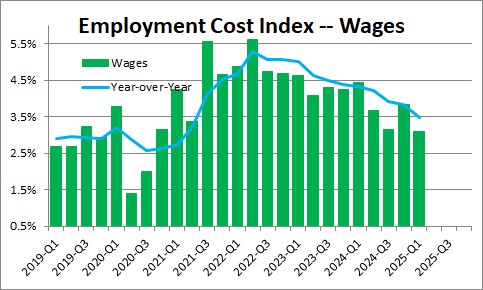
Benefits climbed at a 4.7% rate in the first quarter after climbing 3.3% in the fourth quarter. Over the past year benefits have risen 3.8%.
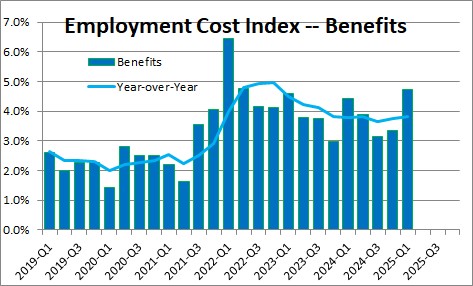
People pay attention to the employment labor costs, but what is really important is labor costs adjusted for the change in productivity which is known as unit labor costs. If an employer boosts his workers’ wages by 3.0% and that worker is no more productive, then unit labor costs rose 3.0%. But if that worker has been 3.0% more productive then he or she has earned their fatter paycheck and unit labor costs, in this instance, would be 0%. There would be no reason for the employer to raise prices because of higher labor costs. Currently, productivity has been rising by about 2.2% and compensation has risen 4.0% which means unit labor costs have been rising 1.8% . A 1.8% increase in unit labor costs is quite consistent with a 2.0% inflation rate.

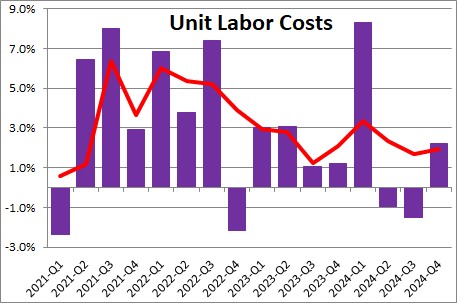
Stephen Slifer
NumberNomics
Charleston, SC

Follow Me